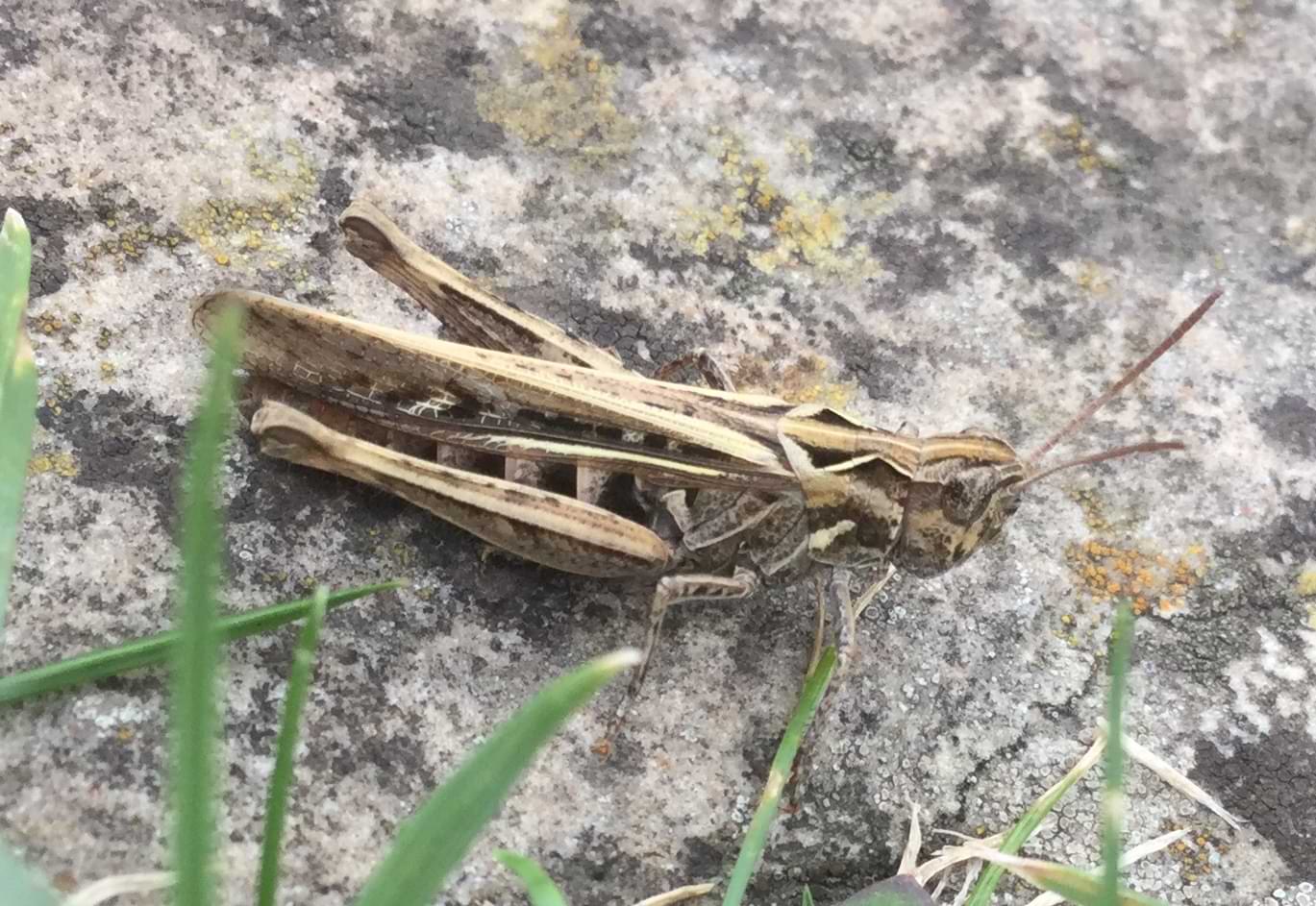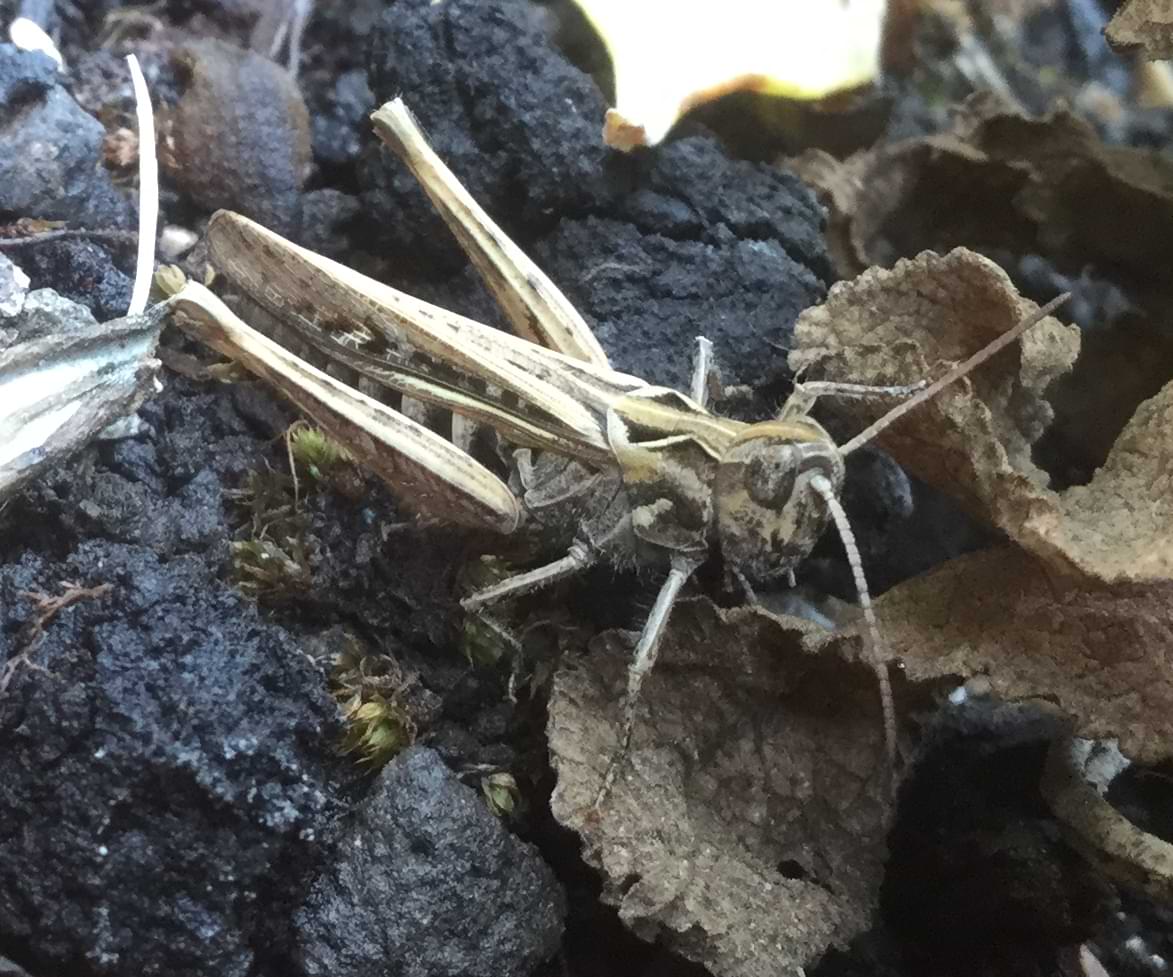Common Field Grasshopper
Photos taken:
2022/09/09
This is the last of the photos I took this summer, and since I started this blog by writing about southern oak bush crickets so I thought it would be nice to end the summer on one of their Orthopteran relatives, the common field grasshopper. This one was very hard to get photos of because it would not stop hopping away from me but I did manage to get two good pictures in the end.

This first one gives a great view of the grasshopper's back! It's easy to think of common grasshoppers like this as just being brown and green, but the patterns and colours here are very intricate and pretty and they can apparently come in a large variety of colours including purple!!
This intricate patterning also extends to the wings. I thought it was just the light at first but their wings have stripes and colour on them as well!
Eventually the grasshopper landed in a plant pot where I got this second picture:

It looks like a pupil but from what I understand the black dot in the middle of the grasshopper's eye area is an optical illusion caused by how light reflects off their compound eyes. Nonetheless it makes them look extremely timid and worried, and considering I had been chasing this poor creature around the garden they probably were a little stressed...
[EDIT: The optical illusion I'm referring to here is called a pseudopupil. I don't fully understand the science behind it, but it occurs because the parts of the compound-eye that are directly facing the viewer/camera are not reflecting light back in the same direction, creating a blind spot.]
Something I didn't realise before this is that grasshoppers and locusts are basically the same thing. Under certain conditions some species just get super hungry and super horny, breed everywhere and then eat everything in mass swarms. Some even change colour, going from their normal greens, browns, and yellows to darker colours like black; it's like a werewolf transformation but for bugs!
Thankfully our grasshopper friend is not capable of going sicko mode and will mostly just eat grass.
As this is the last blog post of my summer photos I thought I'd also do a little wrap up.
I started this blog because I wanted to get better at identifying bugs and learn what ones live in my garden, and that's been pretty successful so far! I feel like I've learnt a lot in a fairly short amount of time.
Probably what has surprised me the most is just how many different species live in the garden. I've been interested in bugs for a few years now but this is the first year when I've actively been looking around the garden for them, and there's just so many to look at!
There were actually loads more bugs I saw this summer but couldn't take pictures of due to them being way too small; I'm hoping to get a macro lens at some point in the future so there should be even more species to share next summer. I'd particularly love to photograph some aphids because they're extremely cute, and I briefly got to see a lacewing fly a few months ago so I'm looking forward to seeing them again next year.
It took a while to get all of these summer posts done so this is actually being written near the end of autumn. Most bugs are now starting to either die off or getting ready to overwinter, but there's still a surprising amount of them flying around and I'll hopefully have a few new bug photos to share here soon.
Lastly, I'm not sure is anyone is reading these blog posts but if you are, thanks! I write this blog entirely for my own amusement but it's nice to think other people are enjoying looking at the bugs too.